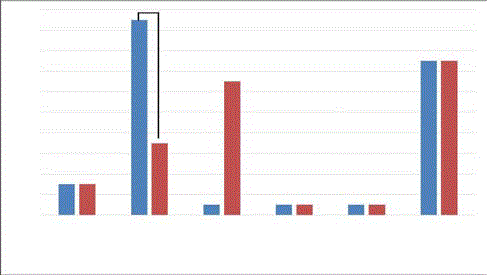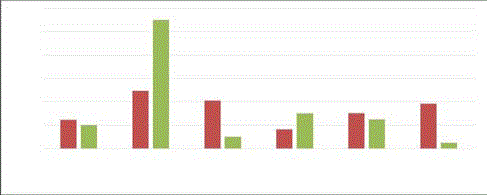Review Article
The Effects of Health Guidance for Men with High Risks of Metabolic Syndrome
Setsumi Kudo1, Akiko Yamasaki2* and Itsushi Takai3
1Osaka Aoyama University Faculty of Health Science School of Nursing, Japan
2raduate School of Medicine, Kyoto University, Japan
3Osaka University Economics, Japan
*Corresponding author: Akiko Yamasaki, Graduate School of Medicine, Kyoto University, Japan
Published: 19 Apr 2018
Cite this article as: Kudo S, Yamasaki A, Takai I. The
Effects of Health Guidance for Men with
High Risks of Metabolic Syndrome. Clin
Oncol. 2018; 3: 1447
Abstract
The study intends to clarify the effect of health guidance provided by an occupational health nurse
for six months for male workers identified with high risks of metabolic syndrome at workplace
health check. The subjects were 73 males out of 137 total workers who went through the health
check, and one health nurse intervened throughout the study period. The effect of guidance was
measured by the changes in attendance persistency, abdominal girth, weight, improvements in
eating and exercising habits, their eagerness to improve lifestyle, etc. Data analysis was performed
by χ2 test.
The participants’ average age was 48.0, and they mainly involved deskwork. The guidance attendance
persistency was 57.5%, and among the 42.5% dropouts, 35% discontinued due to overwhelming
workload. At the beginning, the averages of abdominal girth and weight were 91.7cm and 76.0kg
respectively. After six months, they were reduced by 2.0cm in girth and 1.4kg in weight. The lifestyle
improvement rate was 55.0% in diet and 25.0% in physical exercise, with the diet improvement rate
significantly high (P< 0.01). As for their willingness for lifestyle improvement, 55.0% participants,
more than two times the initial rate, expressed their intention to improve it within half a year.
Keywords: Metabolic syndrome; High risk; Health guidance; Occupational Health Nurse.
Purpose of the Study
The primary purpose of the medical examination was not only to discover metabolic diseases but
also to provide the people an opportunity to reconsider their lifestyle. The specific health instruction
was to raise health consciousness [1].
The study intends to clarify the effect of health guidance provided by an occupational health
nurse for six months for male workers identified with high risks of metabolic syndrome at workplace
health check.
Methods
The study was conducted from June 1st to November 30th, 2015. The subjects were 73 males
out of 137 total workers who went through the health check, and one health nurse intervened
throughout the study period. The effects of guidance were measured by the changes in attendance
persistency, abdominal girth, weight, improvements in eating and exercising habits, their eagerness
to improve lifestyle, etc.
Data analysis was conducted using statistical software SPSS14.0 for Windows. A χ2 test was
performed.
Figure 1
Table 1
Ethical Considerations
The following six items were explained to the subjects by the investigator and the subjects’ consent was obtained: individual privacy will be protected; the investigation will be conducted anonymously and participation is voluntary; there will be no disadvantages for declining to participate; acquired information will be used for no purpose other than research; subjects will be assigned an ID number for computer processing; and a questionnaire will carry out decision processing at the end of research, after which all electronic data will be deleted.
Results
The participants’ average age was 48.0±6.7, and their works were
mainly deskwork (Table 1). The guidance attendance persistency was
57.5%, and among the 42.5% dropouts, 35% discontinued due to
overwhelming workload. At the beginning, the averages of abdominal
girth and weight were 91.7cm and 76.0kg, respectively. After six
months, they were reduced by 2.0cm in girth and 1.4kg in weight. The
lifestyle improvement rate was 55.0% in diet and 25.0% in physical
exercise, with the diet improvement rate significantly high (P< .01)
(Figure 1).
As for their willingness for lifestyle improvement, 55.0%
participants, more than two times the initial rate, expressed their
intention to improve it within half a year (Figure 2).
The result demonstrated that men in their most productive years
successfully reduced abdominal girth and weight and improved
their eating and exercising habit at the guidance of a health nurse. In
particular, their motivation for improved diet and lifestyle steadily
increased.
Discussion
Reduction in abdominal girth and weight is believed to be partly
affected by the fact that daily variation in values is easily recognized
individually because abdominal circumference and body weight are
shown by a concrete value as a result. Therefore, it is estimated that
employees had a tendency to keep their motivation [2,3].
High improvement rate in dietary habit is believed to be partly
affected by the fact that employees were able to get cooperation of
their family to take charge of decision of menu and cooking at
home in addition to their own efforts including transformation of
consciousness.
Individual motivation for improvement of lifestyle habit is
enhanced at the time when the instruction session for six months is
completed. It is necessary at this time to make them restart metabolic
syndrome prevention by setting a new goal as well as to provide their
families with information from workplaces in order to ensure their
continued cooperation [4,5].
It is required to establish an in-house healthcare system in the
future which may not allow employees to quit their efforts on ground
of “busy schedule” by enhancing diffusion and enlightenment of
knowledge not only for employees with high risk of metabolic
syndrome but also for all employees.
Figure 2
Conclusion
The result demonstrated that men in their most productive year’s successfully reduced abdominal girth, weight, improved their eating and exercising habit at the guidance of a health nurse. In particular, their motivation for improved diet and lifestyle steadily increased. However, it is necessary at this time to make them restart metabolic syndrome prevention by setting a new goal as well as to provide their families with information from workplaces in order to ensure their continued cooperation.
References
- Hiratani M, Nakamura S, Nakanisi S, Kihira E. Effects of Specific Health Instruction. Journal of the Japanese Association of Rural Medicine. 2015;64(1):34-40.
- Hayashi F, Takemi Y, Nishimura S, Okuyama M, Nakamura M. Relationship between Weight Loss in Male Workers and Their Attitude towards Weight Loss Attempts after the First Interview of the Specific Health Guidance. The Japanese Society of Nutrition and Dietetics.2012;79(5):294-304.
- Muramoto K, Tsushita K. The Assessment of the Effect of lifestyle Modification Advice Program. Journal of Japan Society for the Study of Obesity.2013;19(2):75-81.
- Tsushita K. The Second Phase of Specific Health Check-ups and Specific Health Guidance. Journal of the Japanese Society of Human Dry Dock. 2012;27(3):535-46.
- Ciba A, Yamamoto H, Morinaga Y, Kawauchi K. Implementation and Evaluation of a Workplace Pervasive Program of Health Guidance for Lifestyle Diseases Prevention. Journal of Japan Academy of Community Health Nursing 2016;19(1):31-9.



